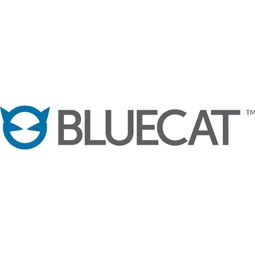BlueCat Provided Support and Expertise, as well as a Resilient, Scalable, and Redundant Network to University College Dublin

Customer Company Size
Large Corporate
Region
- Europe
Country
- Ireland
Product
- BlueCat IPAM
- BlueCat DNS/DHCP Core Services
Tech Stack
- BIND DNS and DHCP
- Red Hat servers
Implementation Scale
- Enterprise-wide Deployment
Impact Metrics
- Productivity Improvements
- Digital Expertise
Technology Category
- Infrastructure as a Service (IaaS) - Cloud Computing
Applicable Industries
- Education
Applicable Functions
- Business Operation
Services
- System Integration
About The Customer
University College Dublin (UCD) was founded in 1854 as the Catholic University of Ireland by John Henry Cardinal Newman. After a few iterations as the Royal University and a constituent college of the National University of Ireland, UCD became an independent college in 1997. Today, UCD is recognized as one of Europe’s leading research institutions, and it is ranked in the top 1% among international universities. Considered to be Ireland’s most globally engaged university, UCD has a population of more than 30,000 students from 120 countries, and 5,500 students are located outside of Ireland. A major contributor to modern Ireland with a rich history, UCD has produced numerous Irish Presidents, Prime Ministers, as well as business, cultural, and sports leaders, including the writer James Joyce in 1902.
The Challenge
Over the years, University College Dublin (UCD) built its own DDI infrastructure, consisting of BIND DNS and DHCP as well as several Red Hat servers. They also created an in-house IPAM solution that allowed its network team to easily create address ranges and edit IP data. However, the network was growing rapidly and placing more demands on the current system. The growth and increasing demand on the network put pressure on the already-tight resources, and the University did not want to be in a precarious position where its networks management group was stretched too thin. As resources left the team, it was becoming harder and harder to run the in-house solution. It made logical sense to move to a managed commercial DDI project where they had robust expertise and extensive support. In addition, UCD was in the process of upgrading to IPv6. They were operating a dual stack and had IPv6 running on a few test networks. As they looked for a new IPAM product, this was something that had to be addressed.
The Solution
As UCD looked for a network vendor, it considered all of the major players in the industry. The University conducted a one-day workshop to evaluate the different networking companies against its requirements. After a detailed comparative analysis, BlueCat out-ranked its competition and could offer UCD a fully resilient, scalable solution with built-in redundancy. UCD’s busy networks team wanted a smooth transition with minimal downtown. Therefore, the BlueCat engineer needed to quickly understand the current system and carefully plan the migration. It was important that the busy day-to-day operations of the UCD network and networks team were not impeded during implementation of the new system. This is where the skills of the BlueCat project engineer was a huge bonus to them. They didn’t need to devote a lot of time or resources to the engineer. Essentially, he was able to plan the transition with limited demands on their current team.
Operational Impact
Quantitative Benefit

Case Study missing?
Start adding your own!
Register with your work email and create a new case study profile for your business.
Related Case Studies.

Case Study
IoT platform Enables Safety Solutions for U.S. School Districts
Designed to alert drivers when schoolchildren are present, especially in low-visibility conditions, school-zone flasher signals are typically updated manually at each school. The switching is based on the school calendar and manually changed when an unexpected early dismissal occurs, as in the case of a weather-event altering the normal schedule. The process to reprogram the flashers requires a significant effort by school district personnel to implement due to the large number of warning flashers installed across an entire school district.

Case Study
Revolutionizing Medical Training in India: GSL Smart Lab and the LAP Mentor
The GSL SMART Lab, a collective effort of the GSL College of Medicine and the GSL College of Nursing and Health Science, was facing a challenge in providing superior training to healthcare professionals. As clinical medicine was becoming more focused on patient safety and quality of care, the need for medical simulation to bridge the educational gap between the classroom and the clinical environment was becoming increasingly apparent. Dr. Sandeep Ganni, the director of the GSL SMART Lab, envisioned a world-class surgical and medical training center where physicians and healthcare professionals could learn skills through simulation training. He was looking for different simulators for different specialties to provide both basic and advanced simulation training. For laparoscopic surgery, he was interested in a high fidelity simulator that could provide basic surgical and suturing skills training for international accreditation as well as specific hands-on training in complex laparoscopic procedures for practicing physicians in India.

Case Study
Implementing Robotic Surgery Training Simulator for Enhanced Surgical Proficiency
Fundacio Puigvert, a leading European medical center specializing in Urology, Nephrology, and Andrology, faced a significant challenge in training its surgical residents. The institution recognized the need for a more standardized and comprehensive training curriculum, particularly in the area of robotic surgery. The challenge was underscored by two independent studies showing that less than 5% of residents in Italian and German residency programs could perform major or complex procedures by the end of their residency. The institution sought to establish a virtual reality simulation lab that would include endourological, laparoscopic, and robotic platforms. However, they needed a simulator that could replicate both the hardware and software of the robotic Da Vinci console used in the operating room, without being connected to the actual physical console. They also required a system that could provide both basic and advanced simulation training, and a metrics system to assess the proficiency of the trainees before they performed surgical procedures in the operating theater.

Case Study
Edinburgh Napier University streamlines long-distance learning with Cisco WebEX
• Geographically dispersed campus made in-person meetings costly and inconvenient.• Distance-learning programs in Malaysia, India, and China required dependable, user-friendly online tools to maximize interaction in collaborative workspaces.• Virtual learning environment required a separate sign-in process, resulting in a significant administrative burden for IT staff and limited adoption of collaboration technology.

Case Study
8x increased productivity with VKS
Before VKS, a teacher would spend a lot of time showing a group of 22 students how to build a set of stairs within a semester of 120 hours. Along with not leaving the teacher much time to provide one-on-one support for each student to properly learn carpentry, it also left a considerable amount of room for error. Key information would be misinterpreted or lost as the class was taught in the typical show-and-tell way.

Case Study
Scalable IoT Empowering GreenFlex's Sustainable Growth
GreenFlex, a company that supports sustainable development, decarbonization, and energy efficiency, faced several challenges in its quest to expand its business. The company needed to deploy a robust and sustainable IoT technology to support its growth. It was crucial for them to monitor and control devices at customer sites in a safe and reliable manner. They also needed to integrate devices across a range of communication protocols and gather and act on data to meet efficiency targets. GreenFlex had previously built IoT capabilities into its digital platform, GreenFlexIQ, to monitor and manage customer sites remotely. However, they soon realized that they needed a new platform to support their ambitions. They needed a platform that could scale to connect more devices for production management and make it easier for the operations team to manage devices in the field.


